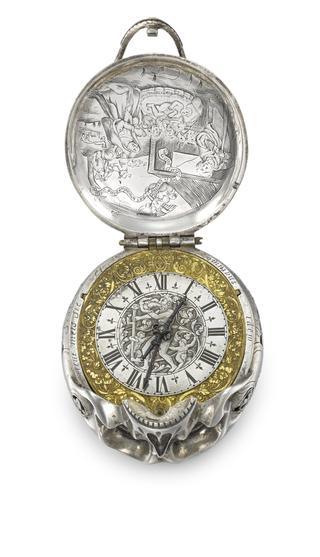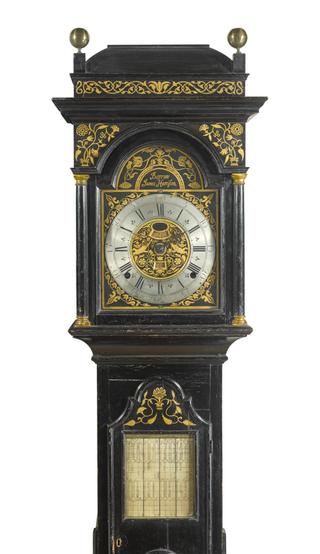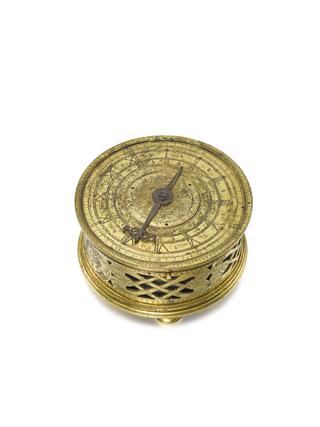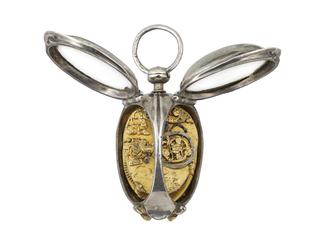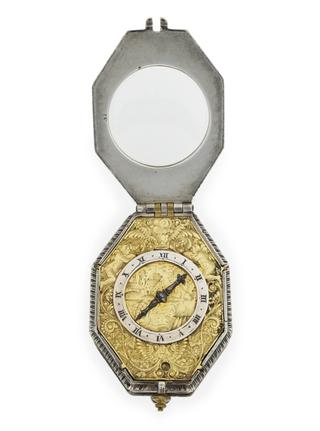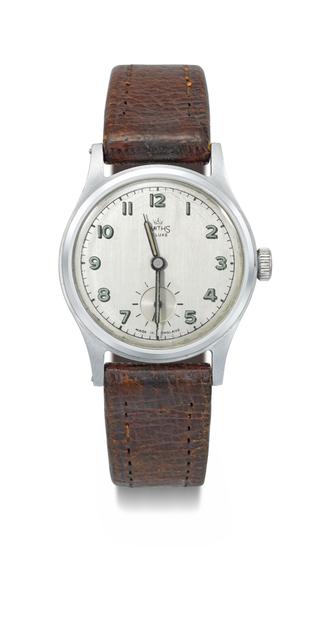
A gauge, used for measuring watch jewel holes. This gilt-brass gauge can measure 12 different sized jewels, with each size marked on the top of the tool. Inscribed on the top of the tool is ‘Mixed Gauge, C, Inventor, S. A. Brooks, 10 Northampton Square, London. E. C., Prize Medal, International Exhibition, 1862’.
The gauge is contained within a wooden box, which contains various paper labels giving information about the contents. The following description is printed on the label inside of the lid:
‘The Mixed Gauge consists of a selection of sizes from gauges Nos 1, 2 and 3 [Brooks sold ten sizes of gauge] which were first exhibited in Class 16 [at the] International Exhibition 1862. It is arranged so as to be useful for watch makers or material dealers resident at a distance from the watch jeweller, enabling them to determine the size of any ordinary pivot to escapement or small wheels, and by merely quoting the numbers, obtain the jewel hole quite as accurate as though they sent the wheel to the jeweller, thereby saving risk of loss or damage. It will also be useful in selecting a stock of jewels. Y[ours] S[incerely] S A Brook.’
In better quality watches, bearing surfaces such as pivot holes can be made from precious stones like ruby, because of their hardwearing properties. These are referred to as watch jewels. Watch pivots were made in all different sizes and needed jewels of a corresponding fit. This gauge allowed the watchmaker to quickly determine the right sized jewel for the job. The Brooks were very important 19th century London chronometer and watch jewellers and appear to have supplied jewels to many of the best London watchmakers. Clockmakers' Museum No. 1522
Details
- Category:
- Clockmakers
- Collection:
- The Worshipful Company of Clockmakers
- Object Number:
- L2021-258
- Materials:
- brass (copper, zinc alloy), steel (metal) and wood (unidentified)
- Measurements:
-
overall: 41 mm x 79 mm x 79 mm,
- type:
- gauge
